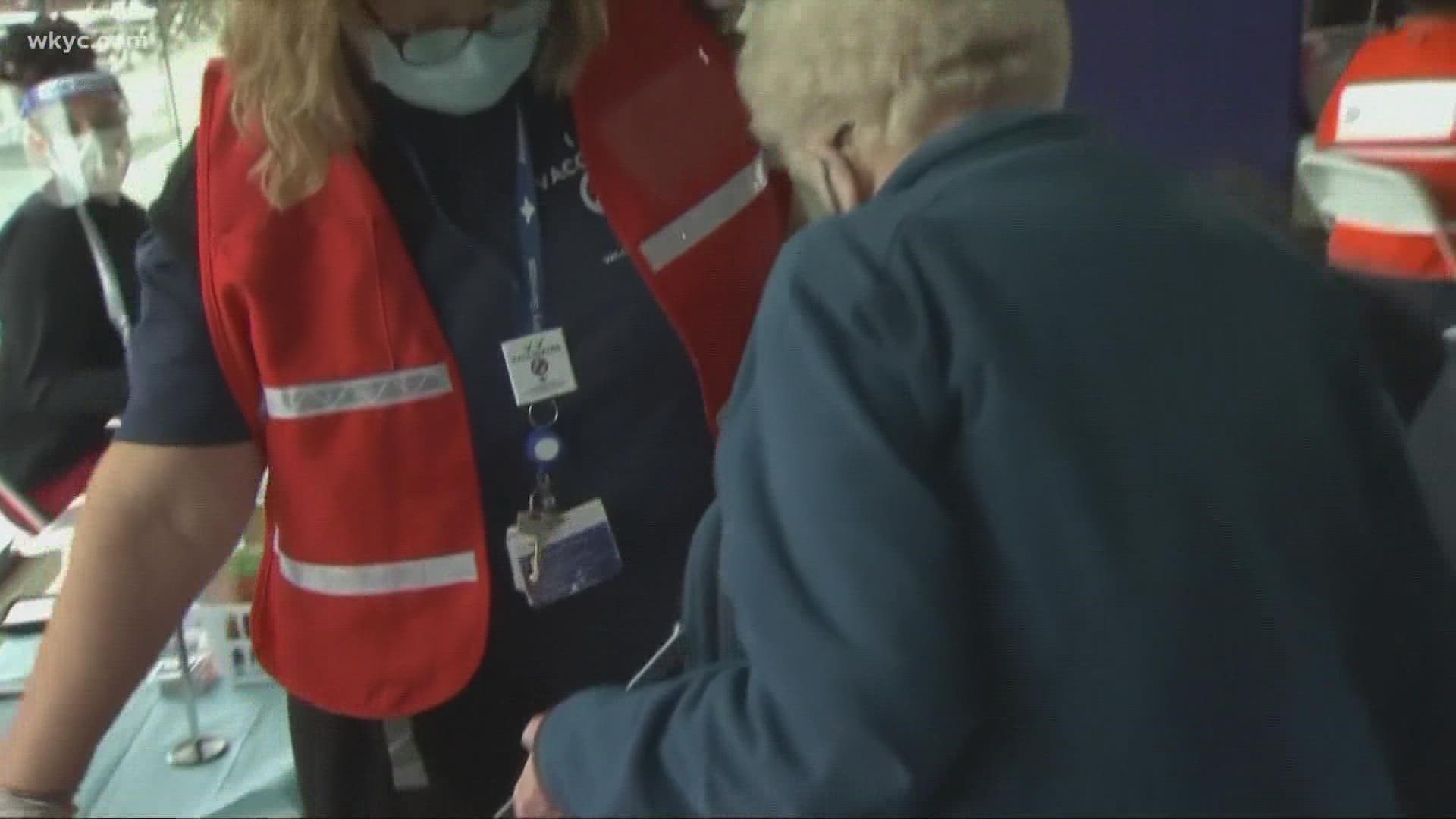COLUMBUS, Ohio — Ohio's ongoing COVID-19 hospital surge is still largely being driven by unvaccinated individuals, according to the Cleveland Clinic.
In a press conference hosted by the Ohio Department of Health Friday morning, Clinic Chief Medical Operations Officer Dr. Robert Wyllie said 75% of the hospital system's current coronavirus patients are not vaccinated. In addition, the same applies to 87% of such patients in ICUs, along with 91% of those on ventilators.
"This really echoes your warning and your urge to people in the state to get vaccinated and get boosted, if at all possible," Wyllie added, referring to earlier remarks from ODH Director Dr. Bruce Vanderhoff.
The state's current COVID case numbers are at their highest levels since the pandemic began, mostly due to the emergence of the more contagious omicron variant. While all those at the press conference today agreed that omicron infections are by and large milder than previous variants, higher case loads can still lead to more hospitalizations, and Ohio's hospitals are indeed seeing record numbers of patients with the virus as well.
Wyllie acknowledged that the Cleveland-Akron-Canton area was at the "tip of the spear" when it came to the recent hospital spike, disproportionately out-pacing other regions in the state. However, he did report parts of the area are beginning to see a decline in numbers, with the number of cases in Cuyahoga County dropping by almost 25% over the last couple of weeks.
"We hope to see the number of hospitalizations subsequently, as a lagging indicator, start to go down," Wyllie said, also stating that more than half of Ohio's current COVID-19 hospitalizations were in the northern part of the state.
Prior to omicron, hospitals across the U.S. had to grapple with the delta variant, which while less contagious and less resistant to vaccines proved to lead to much more severe illness on average, especially for those unvaccinated. Now, Wyllie says the Cleveland Clinic is seeing "very few delta cases," explaining that the variant is essentially being "wipe[d] out" by omicron.
"We've seen a virus that is much more infectious but much less severe by all signs in our current data," Wyllie said of omicron, which he claimed is now making up "nearly 100%" of the hospital system's cases. "In that way, it is a 'silver lining,' in terms of the new infection."
In regards to the steep drop in cases in South Africa -- where omicron was first detected -- after a large spike, Vanderhoff and others said they were "confident" Ohio would see a similar drop, although the state's surge could "linger" a bit more thanks to a relatively older population. In short, the director and others said the best solution is clear: Get vaccinated.
"This virus is not going away," Vanderhoff declared. "With variant after variant after variant, our best defense against severe illness has remained getting vaccinated."
Related headlines:
- COVID-19 in Ohio: State reports 19,442 new cases in the last 24 hours
- What's the best way to tell if it's a cold, the flu or COVID?
- Northeast Ohio doctors encourage boosters for 12 to 15-year-olds
- UH officials hopeful Northeast Ohio may have peaked with Omicron
- The COVID connection: Humans and deer
- Gov. Mike DeWine on Ohio National Guard vaccinations: We’re not happy

